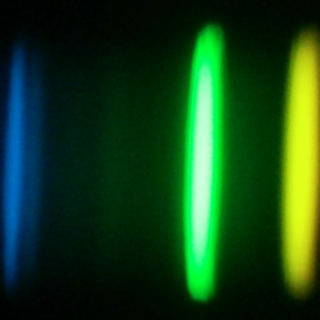Bibcode
Schultheis, M.; Rojas-Arriagada, A.; García Pérez, A. E.; Jönsson, H.; Hayden, M.; Nandakumar, G.; Cunha, K.; Allende Prieto, C.; Holtzman, J. A.; Beers, T. C.; Bizyaev, D.; Brinkmann, J.; Carrera, R.; Cohen, R. E.; Geisler, D.; Hearty, F. R.; Fernandez-Tricado, J. G.; Maraston, C.; Minnitti, D.; Nitschelm, C.; Roman-Lopes, A.; Schneider, D. P.; Tang, B.; Villanova, S.; Zasowski, G.; Majewski, S. R.
Bibliographical reference
Astronomy and Astrophysics, Volume 600, id.A14, 14 pp.
Advertised on:
3
2017
Journal
Citations
73
Refereed citations
68
Description
Context. Baade's window (BW) is one of the most observed Galactic bulge
fields in terms of chemical abundances. Owing to its low and homogeneous
interstellar absorption it is considered the perfect calibration field
for Galactic bulge studies. Aims: In the era of large
spectroscopic surveys, calibration fields such as BW are necessary for
cross calibrating the stellar parameters and individual abundances of
the APOGEE survey. Methods: We use the APOGEE BW stars to derive
the metallicity distribution function (MDF) and individual abundances
for α- and iron-peak elements of the APOGEE ASPCAP pipeline
(DR13), as well as the age distribution for stars in BW. Results:
We determine the MDF of APOGEE stars in BW and find a remarkable
agreement with that of the Gaia-ESO survey (GES). Both exhibit a clear
bimodal distribution. We also find that the Mg-metallicity planes of the
two surveys agree well, except for the metal-rich part ([Fe/H] >
0.1), where APOGEE finds systematically higher Mg abundances with
respect to the GES. The ages based on the [C/N] ratio reveal a bimodal
age distribution, with a major old population at 10 Gyr, with a
decreasing tail towards younger stars. A comparison of stellar
parameters determined by APOGEE and those determined by other sources
reveals detectable systematic offsets, in particular for spectroscopic
surface gravity estimates. In general, we find a good agreement between
individual abundances of O, Na, Mg, Al, Si, K, Ca, Cr, Mn, Co, and Ni
from APOGEE with that of literature values. Conclusions: We have
shown that in general APOGEE data show a good agreement in terms of MDF
and individual chemical abundances with respect to literature works.
Using the [C/N] ratio we found a significant fraction of young stars in
BW.
Related projects

Galaxy Evolution in the Local Group
Galaxy formation and evolution is a fundamental Astrophysical problem. Its study requires “travelling back in time”, for which there are two complementary approaches. One is to analyse galaxy properties as a function of red-shift. Our team focuses on the other approach, called “Galactic Archaeology”. It is based on the determination of galaxy
Emma
Fernández Alvar

Traces of Galaxy Formation: Stellar populations, Dynamics and Morphology
We are a large, diverse, and very active research group aiming to provide a comprehensive picture for the formation of galaxies in the Universe. Rooted in detailed stellar population analysis, we are constantly exploring and developing new tools and ideas to understand how galaxies came to be what we now observe.
Anna
Ferré Mateu

Chemical Abundances in Stars
Stellar spectroscopy allows us to determine the properties and chemical compositions of stars. From this information for stars of different ages in the Milky Way, it is possible to reconstruct the chemical evolution of the Galaxy, as well as the origin of the elements heavier than boron, created mainly in stellar interiors. It is also possible to
Carlos
Allende Prieto